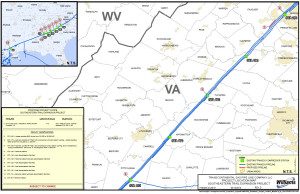
Tulsa’s Williams Partners L.P.’s Transco has filed an application seeking federal government approval of an expansion of its Southeastern Trail gas line along the East Coast.
The company filed with the Federal Energy Regulatory Commission asking for authorization of the $404 million project which will include another 7.7 miles of line in Virginia. The project also includes horsepower additions at existing compressor stations in Virginia and piping and valve modifications on existing operations in South Carolina, Georgia and Louisiana.
The company says the expansion would create 296,375 dekatherms a day of additional capacity to markets in the Mid-Atlantic and Southeastern U.S. for the 2020/2021 winter heating season.
Transco is considered the country’s largest volume and fastest-growing interstate natural gas pipeline system. Williams Partners has already obtained agreements with utility and local distribution companies in Virginia, North Carolina, South Carolina and Georgia for transportation service under the project.
The company says once the Southeastern Trail is finished, it’ll meet the growing natural gas demand in the Southeast.
“Southeastern Trail is a critical project that will work to bring key supplies from interconnects in the Mid-Atlantic region to growing demand centers in the Southeastern U.S.,” said Micheal Dunn, chief operating officer of Williams Partners’ general partner.
The company held an open season for the project last summer and executed long-term binding precedent agreements with five natural gas shippers for 100 percent of the firm transportation capacity. Customers served by the project are PSNC Energy, South Carolina Electric & Gas, Virginia Natural Gas, the City of Buford, Ga., and the City of LaGrange, Ga.
Subject to approval by the Federal Energy Regulatory Commission, the Southeastern Trail Expansion project will consist of approximately 7.7 miles of 42-inch pipeline looping facilities in Virginia, horsepower additions at existing compressor stations in Virginia, and piping and valve modifications on other existing facilities in South Carolina, Georgia, and Louisiana to allow for bi-directional flow.





